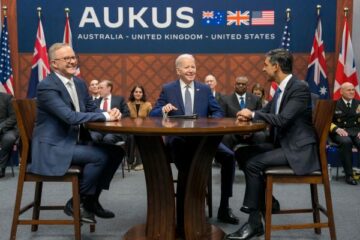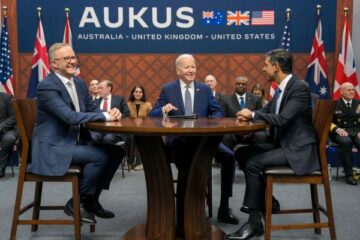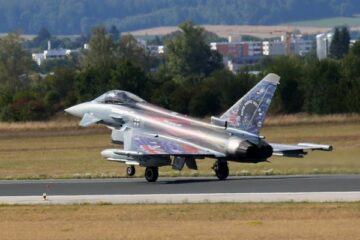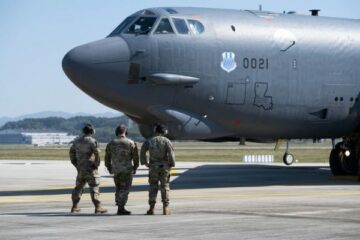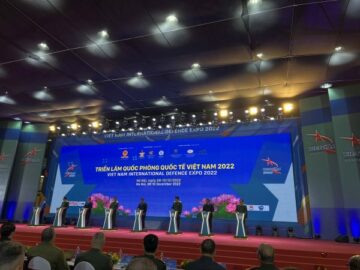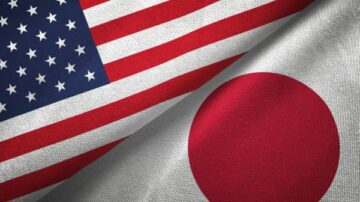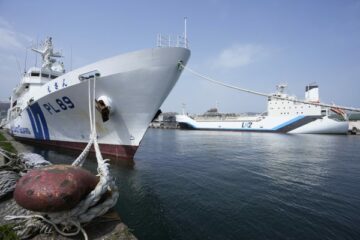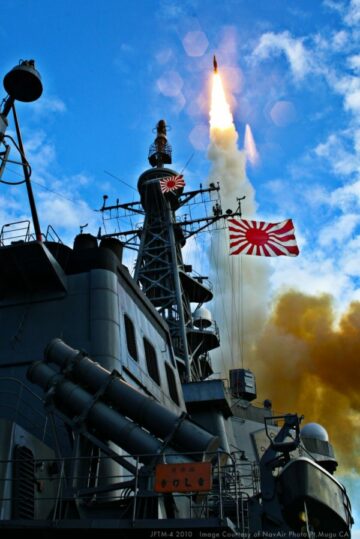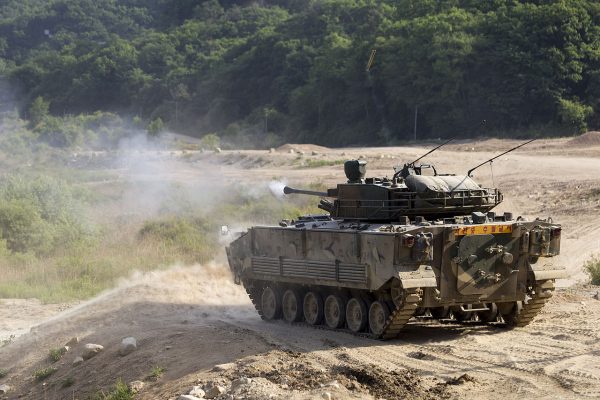
On July 26, 2023, multiple media reports emerged regarding Hanwha Defense’s successful tender for a multi-billion dollar contract to provide Australia with 129 AS21 Redback Infantry Fighting Vehicles (IFVs). The Redback IFV sale has served to further bolster South Korea’s burgeoning reputation as an up-and-rising competitor in the international arms market, following successful deals brokered with countries such as Poland, Malaysia, and Saudi Arabia, among others.
A deep-dive analysis into the technicalities of this successful K-Export story reveals some key drivers of growth for its defense industry, and potential causes for concern.
The Arms Export Deal
In late August 2018, Australia released an open tender search for an IFV meant for close combat operations against future threats. The tender was part of the Australian Defense Force (ADF)’s LAND 400 Phase 3 project, Australia’s arms acquisition project that aims to upgrade its land combat capabilities to meet modern operational requirements.
Merely six months later, the tender was closed for bidding in March 2019, with two frontrunners announced to have passed the initial selection phase: Hanwha Defense’s AS21 Redback IFV and Rheinmetall’s KF-41 Lynx IFV. Eventually, both companies delivered three vehicles each to Australia to undergo a series of operational trials and end-user evaluations, a technical evaluative process also known as a Risk Mitigation Activity (RMA).
The full RMA process lasted from late 2019 to late 2021, with tests conducted to assess each IFV’s capabilities in terms of its protection, mobility, and firepower, as well as its ability to integrate with existing ADF assets in combined operations, with the participation of ADF soldiers.
The LAND 400 Phase 3 project had initially set out an acquisition plan of 450 IFVs, but after a lengthy delay in announcing the successful bidder, one that lasted through 2022, Australia released its 2023 Defense Strategic Review in April 2023, confirming that the acquisition number would be reduced from 450 to 129 IFVs.
Multiple media reports emerged in late July 2023 regarding Hanwha Defense’s successful bid, with Australia’s Minister for Defense Industry Pat Conroy confirming this via a press release on July 27. Australia’s deal with Hanwha is estimated to cost close to US$4.7 billion, with plans to assemble the 129 Redback IFVs at Hanwha Defense’s manufacturing base located in Victoria, Australia.
The AS21 Redback IFV is set to replace the ADF’s current M113 Armored Personnel Carriers (APCs), which have been part of the ADF’s land fighting setup since 1964. The LAND 400 Phase 3 project was started primarily to replace the ADF’s existing fleet of 431 M113 APCs, which last went through an upgrade-and-modernization project between 2007 and 2012. Australia also committed to deliver 28 M113 APCs to Ukraine each in July 2022 and June 2023 respectively, which would represent a further depletion in its existing fleet strength.
The ADF’s fleet of M113s is scheduled for complete withdrawal from deployment by 2030, and analysts have described the M113s to be an “essentially obsolete” asset. The M113 is seen as undeployable in any operations with combat risk involved due to concerns over its lack of armor plate protection, and more specifically, its vulnerability against larger ammunition sizes and modern explosives such as improvised explosive devices (IEDs). The M113 APC has not been included in recent deployments by the ADF, presumably due to this vulnerability against contemporary munitions.
Many states still possess M113 APCs in their military arsenals today, but as defense technology has developed at a meteoric pace, the M113s have largely been removed from battle frontlines, with all production halted in 2007. European states such as Belgium and Luxembourg have committed to delivering repaired batches of M113 APCs to support Ukraine in its war against Russia, while other user states such as the United States and Singapore have developed new vehicles to replace their M113 APCs in efforts to ensure that their land warfighting setup remains relevant in today’s operational environment.
Hanwha Defense’s successful bid to supply the M113s’ replacement in Australia is an affirmation of the production capabilities of South Korea’s military industrial complex. The up-and-coming industry has been one of the developmental priorities of incumbent South Korean President Yoon Suk-yeol, who previously committed to transforming South Korea into one of the world’s top four weapons suppliers by 2027.
Its successful capture of the Redback IFV deal is an attestation of Hanwha’s ability to produce land warfighting assets that can compete on the same stage as Rheinmetall, one of the most prominent arms producers in the world. Rheinmetall, based in Germany, is renowned for its land-based combat vehicles such as the Leopard 2 Main Battle Tank (MBT) and the Boxer Combat Reconnaissance Vehicle (CRV). The latter won Australia’s previous LAND 400 Phase 2 project in April 2023, with Rheinmetall agreeing to provide 211 Boxer CRVs for the Australian Army.
By beating out Rheinmetall this time, South Korea’s defense industry has demonstrated that its corporations have the technical expertise and large-scale manufacturing capabilities to compete with Germany, an influential player in the international arms market previously depicted by analysts as “the armory of the world.”
The AS21 Redback IFV
An understanding of the AS21 Redback IFV has to begin with a baseline disclaimer – the Redback IFV is a development variant of South Korea’s own K21 IFV, modified specifically to contend for the Australian contract. Much has been said about the Redback’s performance during Australia’s RMA process, but there are some particularly notable details of the IFV, considering that Australia’s initial tender laid out its considerations for the contract. The ADF stated specific preferences for a vehicle that could carry a six-man crew, as well as one equipped with a tracked vehicle and a manned turret. With this in mind, an analysis of the Redback IFV’s technical specifications reveals specific modifications that could have played a critical role in tipping the bidding scales in Hanwha’s favor.
First, the Redback IFV’s main armament is the Mark 44 Bushmaster II 30 mm main gun, a weapon that is also deployed on many other military assets, including Singapore’s Bionix and Hunter IFVs, Taiwan’s CM-34 IFV, as well as on patrol vessels operated by Japan’s Coast Guard. Most notably, similar versions of the Redback’s 30 mm main gun can also be found on variants of the United States’ Lockheed AC-130 gunship, San Antonio-class transport ships, and Zumwalt-class destroyers. This ensures that interoperability, at least on the foundational level, can be achieved between Australia and its defense partners, especially during the conduct of inter-state military exercises.
From the intra-state perspective of combined arms operations, Australia’s Huon-class naval minehunters and Slinger anti-drone weapon system also uses similar-sized ammunition, which simplifies logistical and operational processes in joint operations, an area of emphasis by Australia in its initial tender.
Second, the Redback IFV uses one-piece rubber tracks, which allow it to absorb more shock when traversing difficult and uneven terrain, as well as attain increased mobility when braking and making tight-angle maneuvers. The rubber tracks also reduce the overall noise and vibration generated by the vehicle, as compared to IFVs that employ the usual metal-linked track, as seen in its direct competitor, Rheinmetall’s Lynx IFV. A one-piece track is also much simpler for operational maintenance and repairs, lowering the barriers of entry to developing vehicle expertise in troopers and potentially reducing maintenance costs.
Other specifications include the infusion of Israeli armor plate technology in the Redback’s operating system, as well as the additional equipping of Rafael’s SPIKE anti-tank guided missiles, which provides a significant boost to its protection levels and overall lethality respectively.
It’s Not All K-Roses
Hanwha Defense’s success in securing Australia’s approval for the Redback IFV contract is a testament to South Korea’s growing influence in the international arms market, and a particularly rosy picture of its defense industry and capabilities can be easily painted. With a strategic and whole-of-government approach to strengthen its defense capabilities, South Korea has planted its defense industry in a position of privilege, with the necessary conditions in place to capitalize on emerging gaps in the global arms trade, extending past Poland and Europe, into Southeast Asia and the Middle East.
However, challenges lie ahead for an industry that is growing at a rate never seen before, and small structural cracks can still be identified in South Korea’s defense industry.
For one, it has yet to completely figure out the development of powerpack capabilities to support its assets. K2s are still primarily reliant on a German transmission system for its engine to run, and the new KF-21 fighter jet still operates on the American-produced F404 engine. Controversy erupted in 2014 over problems related to the development of locally-manufactured engines for South Korean military vehicles, with observers noting that localization projects to develop powerpacks for its armored vehicles have produced poor results.
For the aforementioned AS21 Redback IFVs, its current fleet remains powered by a 1000-horsepower Motoren-und Turbine-Union (MTU) eight-cylinder diesel engine, with its transmission system still reliant on German engine manufacturer MTU Aero Engines. A functional powerpack is paramount to the effective operation of any military vehicle, and this perceived potential vulnerability is undoubtedly a downside for South Korea’s defense industry.
To be fair, joint plans have been announced to develop a fully-localized version of the Redback’s engine to eradicate reliance on external parties, and there have been rumblings about a locally-developed SMV engine meant to eventually replace the MTU engines currently deployed in both the Redback IFV and South Korea’s K9 howitzer. However, a wait-and-see approach has to be adopted in order to properly assess if South Korea has overcome its powerpack development issues, which has long been a sensitive topic in its local defense industry.
All in all, this is a warning sign that South Korea’s defense industry does not yet possess the necessary technical capabilities to guarantee complete self-reliance in its defense setup. These limitations would essentially be a glass ceiling preventing its defense industry from delivering fully on its potential. Absolute security is every state’s ultimate aspiration in defense, but such patterns of reliance expose vulnerabilities that potential adversaries can use in the designing of military operations, putting the state’s security and survival at risk.
More crucially, South Korea cannot wager the future of its defense industry by relying on the slip-ups of its competitors such as Russia, the United States, and Germany, with the former being embroiled in its war with Ukraine, and the latter two dealing with internal structural issues in their arms industries It would be unwise to bet against the eventual recovery of these industry stalwarts, considering their long-established excellence in the arms export business.
While South Korea’s astute and timely identification of a gap in global demand for arms, as seen in Poland, has placed it in good standing and reputation amongst other states in an increasingly militarized international arena, it has to carve out a justifiable and sustainable space in the international arms market in order to maintain its hard-earned reputation of excellence.
All the media-generated hype surrounding the rise of K-Arms has placed South Korea’s defense industry on a bed of roses, where all signs point to the positives. However, the road for it to reach the upper echelons of international arms exporters remains a tedious and turbulent one. South Korea has to continue making opportunistic advances via widening its arms clientele, while forging new frontiers in its vehicle creations, to truly secure its position of privilege in the global arms market.
- SEO Powered Content & PR Distribution. Get Amplified Today.
- PlatoData.Network Vertical Generative Ai. Empower Yourself. Access Here.
- PlatoAiStream. Web3 Intelligence. Knowledge Amplified. Access Here.
- PlatoESG. Automotive / EVs, Carbon, CleanTech, Energy, Environment, Solar, Waste Management. Access Here.
- PlatoHealth. Biotech and Clinical Trials Intelligence. Access Here.
- ChartPrime. Elevate your Trading Game with ChartPrime. Access Here.
- BlockOffsets. Modernizing Environmental Offset Ownership. Access Here.
- Source: https://thediplomat.com/2023/09/how-south-koreas-as21-redback-ifv-won-out-in-australia/
- :has
- :is
- :not
- :where
- 1
- 2012
- 2014
- 2018
- 2019
- 2021
- 2022
- 2023
- 2030
- 24
- 26
- 27
- 28
- 30
- 400
- 7
- 9
- a
- ABC
- ability
- About
- Absolute
- access
- achieved
- acquisition
- across
- activity
- Ad
- Additional
- adopted
- advances
- After
- against
- agreeing
- ahead
- aims
- All
- allow
- also
- ammunition
- among
- amongst
- an
- analysis
- and
- announced
- Announcing
- any
- approach
- approval
- April
- ARE
- AREA
- Arena
- arms
- Army
- article
- AS
- aspiration
- assess
- asset
- Assets
- At
- attain
- AUGUST
- Australia
- Australian
- barriers
- base
- based
- Baseline
- Battle
- BE
- been
- before
- begin
- being
- Belgium
- Bet
- between
- bid
- Billion
- bolster
- boost
- both
- brokered
- business
- but
- by
- CAN
- cannot
- capabilities
- capitalize
- capture
- carriers
- carry
- causes
- ceiling
- challenges
- click
- clientele
- Close
- closed
- CNN
- CO
- Coast
- COM
- combat
- combined
- committed
- Companies
- compared
- compete
- competitor
- competitors
- complete
- completely
- complex
- Concern
- conditions
- Conduct
- conducted
- considerations
- considering
- contemporary
- continue
- contract
- controversy
- Corporations
- Cost
- Costs
- could
- countries
- creations
- critical
- crucially
- CRV
- Current
- Currently
- deal
- dealing
- Deals
- defence
- Defense
- deliver
- delivering
- Demand
- demonstrated
- deployed
- deployment
- deployments
- described
- designing
- details
- develop
- developed
- developing
- Development
- development issues
- developmental
- Devices
- diesel
- difficult
- direct
- does
- Dollar
- downside
- drivers
- due
- during
- each
- easily
- Effective
- efforts
- emerged
- emerging
- emphasis
- Engine
- Engines
- ensure
- ensures
- entry
- Environment
- equipped
- especially
- essentially
- European
- evaluations
- eventual
- eventually
- Every
- Excellence
- existing
- expertise
- export
- extending
- external
- fair
- favor
- fighting
- Figure
- FLEET
- following
- For
- Force
- Forging
- Former
- found
- four
- from
- Frontiers
- full
- fully
- functional
- further
- future
- gap
- gaps
- generated
- German
- Germany
- glass
- Global
- good
- Growing
- Growth
- guarantee
- Guard
- guided
- had
- Hanwha
- Have
- here
- How
- However
- HTML
- HTTPS
- Hype
- Identification
- identified
- if
- ii
- in
- include
- included
- Including
- increased
- increasingly
- Incumbent
- industrial
- industries
- industry
- influence
- Influential
- initial
- initially
- integrate
- internal
- International
- Interoperability
- into
- involved
- Israeli
- issues
- IT
- ITS
- Japan’s
- Joins
- joint
- jpg
- July
- just
- Key
- known
- korea
- Korea’s
- Korean
- Lack
- Land
- large-scale
- largely
- larger
- Last
- Late
- later
- least
- Level
- levels
- lie
- limitations
- local
- Localization
- located
- Long
- lowering
- Luxembourg
- lynx
- Main
- maintain
- maintenance
- Making
- Manufacturer
- manufacturing
- many
- March
- mark
- Market
- meant
- Media
- Meet
- meteoric
- Military
- mind
- minister
- missiles
- mitigation
- mobility
- Modern
- Modifications
- modified
- Month
- months
- more
- most
- much
- multiple
- Naver
- necessary
- net
- never
- New
- news
- Noise
- None
- notable
- notably
- noting
- number
- of
- on
- ONE
- open
- operated
- operating
- operating system
- operation
- operational
- Operational processes
- Operations
- order
- Other
- Others
- out
- over
- overall
- Overcome
- own
- Pace
- Paramount
- part
- participation
- particularly
- parties
- partners
- passed
- past
- patterns
- perceived
- performance
- Personnel
- perspective
- phase
- picture
- Place
- plan
- plans
- plato
- Plato Data Intelligence
- PlatoData
- played
- player
- Point
- Poland
- poor
- position
- possess
- potential
- potentially
- preferences
- president
- preventing
- previous
- previously
- primarily
- privilege
- process
- processes
- produce
- Produced
- Producers
- Production
- project
- projects
- prominent
- properly
- protection
- provide
- provides
- Putting
- Rate
- reach
- recent
- recovery
- reduce
- Reduced
- reducing
- regarding
- related
- released
- relevant
- reliance
- relying
- remains
- Removed
- Renowned
- repairs
- replace
- replacement
- Reports
- represent
- reputation
- Requirements
- Results
- Reuters
- Reveals
- Rise
- Risk
- Risk Mitigation
- road
- Role
- Rosy
- rubber
- Run
- Russia
- sale
- same
- San
- scales
- Search
- secure
- securing
- security
- seen
- selection
- sensitive
- Series
- set
- setup
- sign
- significant
- Signs
- similar
- simpler
- since
- Singapore’s
- SIX
- Six months
- sizes
- small
- some
- South
- South Korea
- south korean
- Space
- specific
- specifically
- specifications
- spike
- Stage
- started
- stated
- States
- Still
- Stories
- Story
- Strategic
- strength
- Strengthen
- structural
- subscribe
- success
- successful
- such
- suppliers
- supply
- support
- Surrounding
- survival
- sustainable
- system
- tank
- Technical
- Technology
- Tender
- terms
- testament
- that
- The
- The Future
- the world
- their
- There.
- These
- this
- three
- Through
- time
- timely
- Tipping
- to
- today
- today’s
- top
- topic
- track
- tracks
- trade
- transforming
- transport
- trials
- truly
- turbulent
- two
- Ukraine
- ultimate
- undergo
- understanding
- undoubtedly
- United
- upgrade
- use
- User
- uses
- Variant
- vehicle
- Vehicles
- version
- versions
- via
- Victoria
- Vulnerabilities
- vulnerability
- war
- warning
- was
- Watch
- Weapons
- week
- WELL
- went
- when
- which
- while
- WHO
- with
- withdrawal
- Won
- world
- world’s
- would
- WSJ
- yet
- zephyrnet

